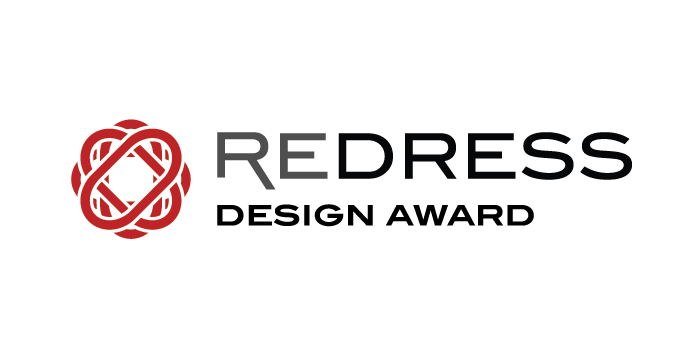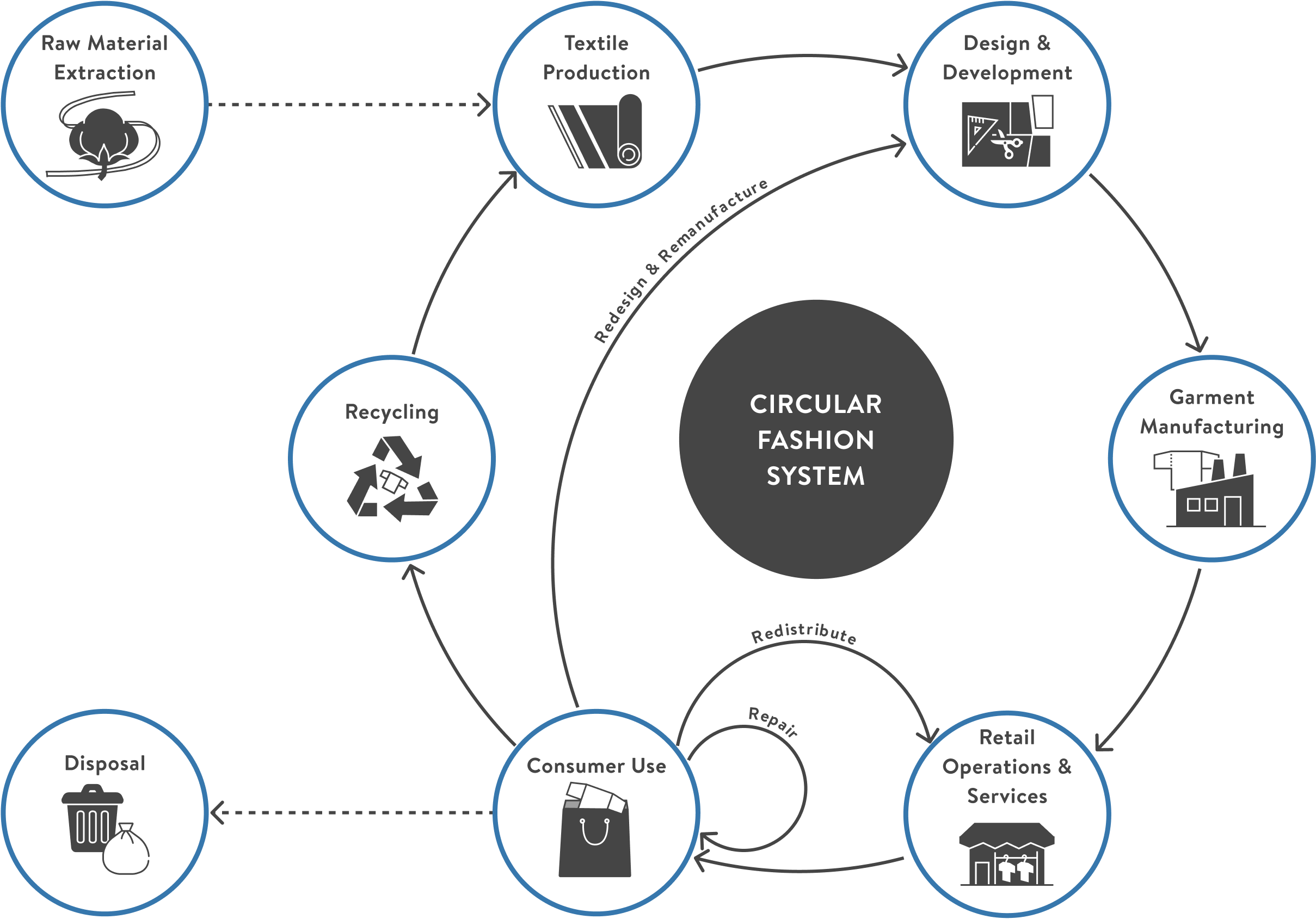Circularity In Fashion
Circularity In Fashion
SUSTAINABILITY VS CIRCULARITY
The terms ‘sustainability’ and ‘circularity’ are often used interchangeably, but are not the same. In order to contextualise the impact the fashion industry has on our ecosystem, we must first understand the differences and relationship between these two terms.
Sustainability is an umbrella term for a system that meets the needs of the present without compromising the ability of future generations to meet theirs. In the fashion industry, we pursue the three main pillars of sustainability (environmental, social and economic) by simultaneously:
Avoiding the depletion of natural resources (planet)
Avoiding the exploitation of workers (people)
Providing economic benefits (profit)
Circularity addresses the environmental side of sustainability, offering a model that takes responsibility for the entire life cycle of a product and its impact on the planet. In essence, circularity means operating in a closed-loop system and taking a ‘cradle-to-cradle’ approach for everything that is brought into existence.
FROM A LINEAR TO A CIRCULAR MODEL
Since the industrialisation of the fashion industry, we have been producing and consuming fashion as if the natural resources needed are endless. The majority of the industry is currently operating on a LINEAR model: where finite resources are taken from nature to make products, that are then used for a short time, and finally disposed of as waste.
To counter this drain on our planet’s resources and slow down climate change, at Redress we believe in adopting a CIRCULAR model.
Circularity relies on three principles:
Eliminate waste and pollution
Circulate products and materials
Regenerate nature
HOW CAN WE IMPLEMENT CIRCULARITY IN FASHION?
With around 80% of a product’s environmental impact locked at the design stage [1], fashion creators have the power to make decisions to significantly improve the circularity of their products.
From sourcing materials to pattern design, manufacturing, consideration of user, and recycling after use, there is an opportunity to implement circular practices at every step of the value chain to minimise environmental impacts. It’s the responsibility of not one, but all stakeholders: product creation teams, supporting teams, vendors, logistics and retail operations, investors and consumers.
There are many ways to approach circularity in fashion. Designers and their teams are in a strong position to recognise issues and reflect them in their designs. At Redress, we have defined four core circular design strategies to guide fashion professionals to create smarter products:
Design for Low Waste: to tackle the waste issue at source
Design for Low-Impact Materials and Processes: to eliminate negative impacts such as pollution
Design for Longevity: to extend the lifespan of garments
Design for Recyclability: to ensure they never become “waste”
Design for Low Waste
With the equivalent of one garbage truck of textiles landfilled or burned every second [2], and the volume continuing to rise steadily worldwide due to increasing production, consumption, and casual disposal of clothing, we increasingly must minimise the waste we leave behind.
Design for Low Waste is a strategy to tackle the waste issue at source, by:
Minimising the creation of textile waste at the onset
Revaluing textile considered waste by the industry
Design for Low-impact Materials and Processes
When textile products are made, the processes used are often harmful to the environment. They may be done to increase efficiency or reduce costs, but come at the expense of our planet and people. Globally, up to 20% of industrial water pollution comes from textile dyeing and finishing. [3]
Design for Low Impact Materials and Processes is a strategy to eliminate negative impacts at every step of the value chain, by:
Understanding fibres and their impact
Selecting the best-in-class processes
Tracking the impact of the products created to have a clear picture on which steps are the most waste generating and energy, water, and chemical intensive.
Design for Longevity
Actively using clothing for an extra nine months can reduce carbon, waste, and water footprints by 20-30%. [4] By creating clothing with longevity in mind, we can reduce fashion’s footprint at the use phase.
Design for Longevity is a strategy to extend the use phase of products, by:
Making long-lasting clothes - using good-quality materials and durable workmanship, ensuring good fit, and communicating clearly about the care instructions
Making clothes last for longer - facilitating an emotional bond between the wearer and garment, and exploring business models that extend the active life of clothes
Design for Recyclability
It is estimated that less than 1% of material used to produce clothing is recycled into new clothing. [5] This is another area with huge potential for fashion professionals to have a positive impact.
Design for Recyclability is a strategy that ensures products never become “waste”, but instead allows for closed-loop material recovery, by:
Taking responsibility for the end-of-life of products
Considering recycling solutions and how they will impact certain product features
THE FUTURE OF FASHION IS CIRCULAR
The transition from a LINEAR to a CIRCULAR fashion model requires all fashion stakeholders to stop working in silos and start collaborating closely with each other. Fashion professionals will succeed when they have a clear understanding of the impact their products have, and are reflective and critical of their work.
Explore more resources from the Redress Academy to continue your journey to circularity.
[1] WRAP (n.d.), WRAP and the circular economy
[2] Ellen Macarthur Foundation (2017), A New Textiles Economy: Redesigning Fashion's Future
[3] Raybin, A (2009), Water pollution and textiles industry as cited in The Sustainable Academy (SFA) and The Global Leadership Award in Sustainable Apparel (GLASA) (2015), The State of the Apparel Sector – 2015 Special Report: Water
[4] WRAP (2013), Design for Longevity Guidance on increasing the active life of clothing
[5] Business of Fashion (2017), The State of Fashion 2018



